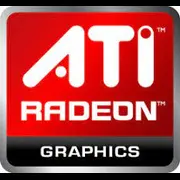ATI Radeon HD 5970

ATI Radeon HD 5970: A Legend of the Past in the Era of Modern Technologies
April 2025
Introduction
The ATI Radeon HD 5970 graphics card, released in 2009, became a symbol of technological breakthrough of its time. However, in 2025, it is perceived more as an artifact of that era than as a relevant solution. Let's examine what makes this model noteworthy today, who might still find it useful, and what lessons can be drawn from its architecture.
Architecture and Key Features
TeraScale 2: Double Power
The HD 5970 is built on the TeraScale 2 architecture (codename R800), combining two RV870 graphics processors on a single PCB. This makes it one of the first successful dual-chip graphics cards. The manufacturing process is 40 nm, which was an advanced solution for 2009.
Unique Features of the Era
- DirectX 11: Support for new tessellation effects and GPU computing.
- ATI Eyefinity: The ability to connect up to 6 monitors—a revolution for multi-display setups.
- CrossFireX: Performance scaling technology, but in the HD 5970, it is already implemented "out of the box" thanks to the two chips.
Important: Modern technologies like ray tracing (RTX), DLSS, or FidelityFX are absent here. This is strictly a “bitmap” card without hardware acceleration for AI or RT cores.
Memory: The Paradox of a Dual-Chip System
Technical Specifications
- Memory Type: GDDR5.
- Capacity: 2 GB (1 GB per GPU).
- Bus: 256-bit per chip, totaling 512-bit.
- Bandwidth: 128 GB/s per chip (256 GB/s theoretically, but due to memory sharing, the efficiency is lower).
Impact on Performance
Even in 2009, 1 GB per chip was the minimum for comfortable gaming at 2560x1600 resolution. By 2025, this is insufficient even for 1080p in modern projects: high-resolution textures simply do not fit in VRAM.
Gaming Performance: Nostalgia with Limitations
Modern Projects
The card is not compatible with games requiring DirectX 12 Ultimate or Vulkan RT. In less demanding titles, performance metrics are modest:
- CS2 (1080p, low settings): ~40-50 FPS (with dips due to lack of VRAM).
- Fortnite (1080p, Performance Mode): ~30-40 FPS.
- Indie games (Hollow Knight, Celeste): Stable 60+ FPS.
Resolutions
- 1080p: The only viable option for 2025, but even here, artifacts can occur.
- 1440p/4K: Impractical due to memory and computational power limitations.
Ray tracing: Not supported at the hardware level.
Professional Tasks: Not the Best Choice
Video Editing and 3D Modeling
- Lack of modern APIs (OpenCL 1.1 versus the current version 3.0) and poor rendering performance.
- No hardware acceleration for H.265 or AV1 encoding/decoding.
Scientific Calculations
Outdated architecture and drivers render the HD 5970 useless for machine learning or simulations. For these tasks, cards that support CUDA (NVIDIA) or modern AMD CDNA architectures are more suitable.
Power Consumption and Heat Generation
TDP and Real Loads
- TDP: 294 W—very high even by 2025 standards.
- Cooling Recommendations:
- A case with at least 3 fans and good airflow.
- Replace thermal paste and clean the heatsink when buying used.
- Ideally used in a PC with water cooling, but mounting adapters will need to be sourced separately.
Comparison with Competitors
In Its Time
- NVIDIA GeForce GTX 295: The main competitor of 2009. The HD 5970 excelled in multi-threaded tasks thanks to DirectX 11 optimizations.
In 2025
- NVIDIA GTX 1650 (4 GB GDDR6): Consumes 75 W, supports DLSS, and current APIs.
- AMD Radeon RX 6400 (4 GB GDDR6): Low power consumption (53 W), support for FSR 3.0.
These cards outperform the HD 5970 even at 1080p, despite their modest specifications.
Practical Tips
Power Supply
A minimum of 600 W with an 80+ Bronze certification. Examples: Corsair CX650M, be quiet! Pure Power 12 M 650W.
Compatibility
- Platform: Requires a motherboard with PCIe 2.0 x16 (compatible with PCIe 3.0/4.0, but with no performance boost).
- Drivers: The latest version is Catalyst 15.7.1 (2015). Conflicts may arise on Windows 10/11.
Pros and Cons
Pros
- Historical value for collectors.
- Support for Eyefinity for multi-monitor configurations.
- Ability to run retro games without emulation.
Cons
- High power consumption.
- Noisy cooling system.
- Lack of support for modern technologies.
Conclusion: Who Is This Card For?
The ATI Radeon HD 5970 in 2025 is a choice for:
1. Retro hardware enthusiasts looking to build PCs in the late 2000s style.
2. Collectors who appreciate technological relics.
3. Old game lovers where the original hardware adds authenticity.
For everyday tasks, modern gaming, or professional work, this card is not suitable. If you're looking for a budget solution under $150, consider newer AMD Radeon RX 6400 or NVIDIA GTX 1650— they are more efficient, quieter, and support current technologies.
Note: New HD 5970 units have not been sold since 2011. On the second-hand market, prices range from $50 to $100, but its value is more emotional than practical.
Basic
Memory Specifications
Theoretical Performance
Miscellaneous
Benchmarks
Compared to Other GPU
Share in social media
Or Link To Us
<a href="https://cputronic.com/en/gpu/ati-radeon-hd-5970" target="_blank">ATI Radeon HD 5970</a>